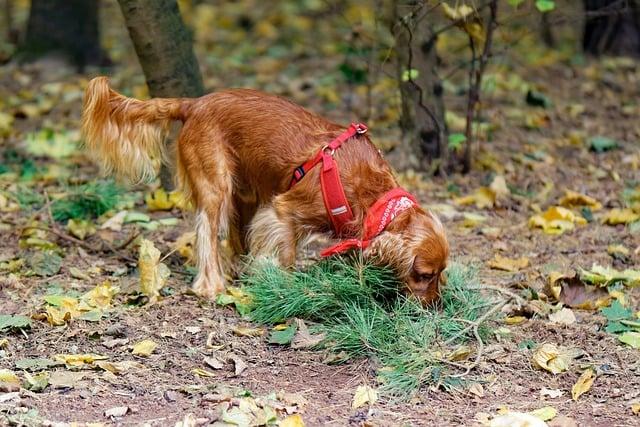In a quiet neighborhood, a friendly golden retriever named Max became the unexpected hero of a summer day. While playing fetch, he noticed a stranger approaching a child. Instinctively, Max barked and positioned himself protectively between the child and the potential threat. This incident sparked a debate: what is the #1 dog to bite? While some breeds may have a reputation, it’s crucial to understand that any dog can bite if provoked. Responsible ownership and training are key. Choose wisely, and ensure your furry friend is a protector, not a threat.
Contents
- Understanding the Factors Behind Dog Biting Incidents
- Identifying the Breeds Most Frequently Involved in Biting
- Preventative Measures to Reduce Dog Bite Risks
- Choosing the Right Dog for Your Lifestyle and Safety
- Q&A
Understanding the Factors Behind Dog Biting Incidents
Understanding the dynamics of dog behavior is crucial in addressing the issue of biting incidents. Various factors contribute to a dog’s propensity to bite, and recognizing these elements can help prevent unfortunate encounters. **Socialization** plays a significant role; dogs that are not adequately exposed to different environments, people, and other animals may develop fear or aggression, leading to defensive biting. Ensuring that a dog is well-socialized from a young age can mitigate these risks.
Another critical factor is **training**. Dogs that lack proper training may not understand boundaries or appropriate behavior, making them more likely to react aggressively in stressful situations. Positive reinforcement training techniques can foster good behavior and help dogs learn to respond calmly to various stimuli. Owners should invest time in training their pets to build a strong foundation of trust and obedience.
Lastly, the **environment** in which a dog is raised significantly impacts its behavior. Dogs that are subjected to neglect, abuse, or chaotic living conditions may develop anxiety or aggression. Creating a stable, loving environment is vital for a dog’s emotional well-being. By addressing these factors, dog owners can take proactive steps to reduce the likelihood of biting incidents and foster a safe, harmonious relationship with their pets.
Identifying the Breeds Most Frequently Involved in Biting
When examining the breeds most frequently involved in biting incidents, it’s essential to approach the topic with a balanced perspective. While certain breeds may appear more often in bite statistics, it’s crucial to understand that behavior is influenced by various factors, including training, socialization, and the owner’s responsibility. Here are some breeds that have been noted in studies and reports:
- Pit Bull Terriers: Often at the center of media attention, these dogs are frequently mentioned in bite reports. However, many advocates argue that their behavior is largely shaped by upbringing and environment.
- Rottweilers: Known for their protective nature, Rottweilers can exhibit aggressive behavior if not properly trained and socialized from a young age.
- German Shepherds: As intelligent and loyal companions, German Shepherds can become aggressive if they feel threatened or if they lack proper training.
- Chihuahuas: Surprisingly, smaller breeds like Chihuahuas are also involved in biting incidents, often due to fear or anxiety rather than aggression.
It’s important to note that the frequency of bites does not solely define a breed’s temperament. Many factors contribute to a dog’s likelihood to bite, including the owner’s experience, the dog’s living conditions, and the level of socialization. Responsible ownership plays a pivotal role in mitigating aggressive tendencies, regardless of breed. For instance, a well-trained and socialized Pit Bull can be a loving family pet, while a neglected Rottweiler may develop behavioral issues.
Furthermore, statistics can sometimes be misleading. Media coverage often sensationalizes certain breeds, leading to a skewed perception of their danger. In reality, any dog, regardless of breed, has the potential to bite if it feels threatened or provoked. Therefore, it is essential to focus on the individual dog’s behavior and the owner’s commitment to training and socialization.
Ultimately, understanding the breeds most frequently involved in biting incidents requires a nuanced approach. By promoting responsible ownership and emphasizing the importance of training and socialization, we can work towards reducing bite incidents across all breeds. It’s not just about identifying the “dangerous” breeds, but rather fostering a culture of awareness and education among dog owners to ensure safe and harmonious interactions between dogs and humans.
Preventative Measures to Reduce Dog Bite Risks
Understanding the factors that contribute to dog bites is essential in fostering a safer environment for both humans and canines. One of the most effective strategies is to **socialize your dog** from an early age. Exposing your puppy to various people, environments, and other animals can help them develop a well-rounded temperament. This exposure reduces anxiety and fear, which are common triggers for aggressive behavior. Regularly attending puppy classes or dog parks can significantly enhance your dog’s social skills.
Another crucial aspect is **training and obedience**. Teaching your dog basic commands such as “sit,” “stay,” and “come” not only strengthens your bond but also establishes you as the leader. A well-trained dog is less likely to react aggressively in stressful situations. Consistent reinforcement of positive behaviors through rewards can create a more obedient pet. Consider enrolling in formal training programs that focus on positive reinforcement techniques, as these have proven to be effective in reducing aggressive tendencies.
It is also vital to **recognize and respect your dog’s boundaries**. Every dog has its comfort zone, and pushing them beyond it can lead to defensive reactions. Pay attention to your dog’s body language; signs of discomfort, such as growling, baring teeth, or stiffening, should not be ignored. Educating family members, especially children, about how to approach and interact with dogs can prevent misunderstandings that may lead to bites. Always supervise interactions between dogs and young children to ensure safety.
Lastly, maintaining your dog’s health is a key preventative measure. Regular veterinary check-ups can help identify any underlying health issues that may contribute to aggressive behavior. Pain or discomfort can make even the most docile dog irritable. Additionally, ensuring your dog is properly exercised can reduce pent-up energy that might otherwise manifest as aggression. A well-exercised dog is generally happier and less likely to exhibit problematic behaviors, making it essential to incorporate daily walks and playtime into your routine.
Choosing the Right Dog for Your Lifestyle and Safety
When considering a canine companion, it’s essential to align your choice with your lifestyle and safety needs. Different breeds come with varying temperaments, energy levels, and care requirements. For instance, if you lead an active lifestyle, a high-energy breed like a Labrador Retriever or a Border Collie may be ideal. These dogs thrive on exercise and can keep up with your adventurous spirit. On the other hand, if you prefer a more laid-back routine, a breed such as a Bulldog or a Basset Hound might be more suitable, as they require less physical activity.
Safety is another critical factor in your decision-making process. Certain breeds are known for their protective instincts, which can be beneficial for families or individuals seeking a guard dog. Breeds like the German Shepherd and Rottweiler are often chosen for their loyalty and ability to deter intruders. However, it’s crucial to understand that these breeds require proper training and socialization to ensure they are well-adjusted and safe around children and other pets.
Additionally, consider the size of the dog in relation to your living space. Larger breeds may need more room to roam and play, while smaller breeds can adapt well to apartment living. **Small breeds** such as Chihuahuas or Pugs can be excellent companions for city dwellers, but they also require careful handling to prevent accidents. Conversely, if you have a spacious home and yard, you might opt for a larger breed that enjoys outdoor activities.
Lastly, think about your experience level with dogs. If you are a first-time dog owner, it may be wise to choose a breed known for its ease of training and friendly disposition, such as a Golden Retriever or a Cavalier King Charles Spaniel. These breeds are often more forgiving of mistakes and can help you build confidence as a dog owner. **Assessing your lifestyle, safety concerns, and experience level** will guide you in selecting a dog that not only fits your home but also enriches your life.
Q&A
-
What breed is most commonly associated with dog bites?
The breed most often reported in dog bite incidents is the Pit Bull. This breed’s strength and tenacity can lead to severe injuries when they do bite, which is why they often top the statistics.
-
Are certain breeds more prone to aggression?
While some breeds, including Rottweilers and German Shepherds, may exhibit aggressive tendencies, it’s crucial to understand that aggression is influenced by factors such as training, socialization, and environment. Responsible ownership plays a significant role in a dog’s behavior.
-
What factors contribute to dog bites?
Dog bites can result from various factors, including:
- Lack of socialization
- Fear or anxiety
- Protective instincts
- Provocation
Understanding these factors can help prevent bites and promote safer interactions.
-
How can dog bites be prevented?
Preventing dog bites involves:
- Proper training
- Socialization from a young age
- Supervision around children
- Recognizing signs of stress or aggression
By taking these proactive steps, dog owners can significantly reduce the risk of bites and ensure a safer environment for everyone.
understanding dog behavior is crucial for safety. While no breed is inherently dangerous, awareness and responsible ownership can prevent bites. Choose wisely, train diligently, and foster a loving environment to ensure a harmonious relationship with your canine companion.

大家好,我是彼得潘,專業的手法身體治療師。我喜歡探索和研究各種主題,並透過與人工智慧的合作分享專業、實用、有趣的文章。我們定期進行人工審核,以確保內容的準確性。如果您發現文章中有任何不準確的地方,請隨時與我們聯繫,我們會及時糾正。您可以透過 [email protected] 與我們聯繫。



